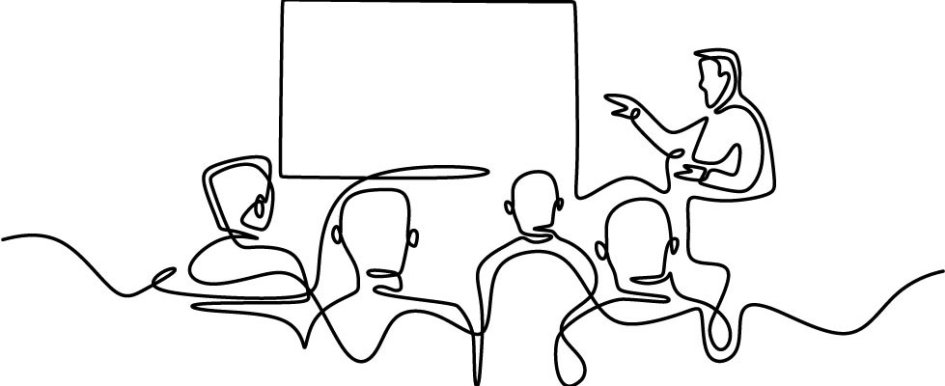
Here’s a scenario: You were successful in responding to a request for qualification (RFQ) and a request for proposal (RFP) and now have been invited to a face-to-face presentation to determine the which contractor will be awarded a contract. Why were you invited? Because you can satisfy the customer’s requirements for budget, safety, quality, bonding, experience, scope of work and labor availability. Congratulations, that is a great accomplishment. But your competitors also got invited. After spending many dollars and hours qualifying and preparing, you then have less than an hour to turn the presentation into a contract award. What do you do before, during and after to come out on top?
Customers fall into two categories: logical buyers and emotional buyers. Logical buyers tap their left brain and think in words, numbers, parts, specifications and sequences. They search for logical justifications that you can meet the budget, schedule and scope of work while delivering the quality they are looking for. They then award to the lowest bidder that meets these criteria. Emotional buyers tap their right brain. They think intuitively, imaginatively and creatively. The right brain is the seat of conscience and hunches. Emotional buyers do not necessarily award to the low bidder. They award to the bidder who makes them feel the most comfortable. The emotional buyer will say, “I know this contractor is not the low bidder, but I am willing to pay a higher price because I feel in my sixth sense that they will look out for my best interest and not take advantage of me.” Whereas, the logical buyer will say, “The only criteria I considered was the low price.”
The goal of your presentations is to have the contract award made on an emotional basis. Why? Having to be the low bidder is not much fun or very profitable. The emotional buying experience evolves through the presentation of six emotional motivators:
- Comfort in you and your company
- Expectancy that you will fulfill all that is required
- Optimism about a successful project
- Desire to complete the project as easily as possible
- Pleasure in peace of mind
- Amazement of your willingness to go the extra mile
If you can deliver these emotions, the customer will respond positively, and you may win the contract.
Aristotle wrote about the three pillars of persuasion: ethos, pathos and logos. Each of these pillars must be satisfied for a presentation to be successful. Ethos is persuading through your ability to establish your credibility, reputation and the ethical appeal required to convince your audience that you are worth listening to. Pathos is persuading through your ability to appeal to the emotions and imagination of your audience. Logos is persuading with reason using logic with supporting evidence and factual data.
Warning: Most presentations fail because presenters skip pillars one and two (ethos and pathos) and jump to category three (logos). They thrust themselves into the unfortunate logical low bid buying condition. This is especially true in the construction industry where we are most comfortable talking about the Logos based plans, specifications, material quantities, dollars, hours, schedules, etc.
Roughly 60% of human communication is body language, 10% spoken words and the remaining 30% is voice pitch, tone, speed and volume. In your presentation, make sure to use positive body language to signal confidence, honesty and cooperation. Smile, look them in the eye and lean forward. Signals they are interested includes note taking, eyes squinting and raised eyebrows. So, keep talking. Signals they are bored includes doodling, pen clicking and looking out the window. So, stop talking. Signals they are confused or doubtful include a red face, head down and leaning back in the chair. So, clarify what is being said.
Success starts before the actual presentation with simple steps such as acting like you want the job. Visit the job site and meet the players. Ask questions and do not assume you know the customers wants and needs. Realize that people like to buy but do not want to be sold.
Your customers do not expect your team to be professional speakers, nor do they want your marketing person to put on a sizzle reel. Your customers are simply looking for trust, open communication and reliability.
During the presentation, try to get your audience to visualize what life will be like if they award you the contract. Often, they want to hear more from the construction manager and superintendent because that is where the rubber meets the road. They already know you are experienced and qualified so focus on their project instead of your past accomplishments. There are specific roles for each member of your presentation team. Remember, contractors who want the job bring the boss. Marketing and salespeople should have a limited role. They have done a great job of getting the company to the presentation, but this is the time for the construction manager and superintendent to bring the contract home.
After the presentation you can celebrate or complain to each other in the parking lot, but do not let the customer hear you. If you did not get the contract award, do not whine or condemn them. If their decision was based on emotion, you might not get the real reason.
What is the main focus? It is not about fancy PowerPoint presentations or smooth-talking salespeople. It is about trust,
which is the biggest human factor in the construction industry. Your customer builds expectations from your promises, but when the commitments are not met, they may feel personally betrayed.
Inherent to the construction industry is the baring of souls and the requirement to expose oneself to the whims of unpredictability and change. If you are trusted, your customers will give you their world. But if you betray their trust, you will face a world of problems.
